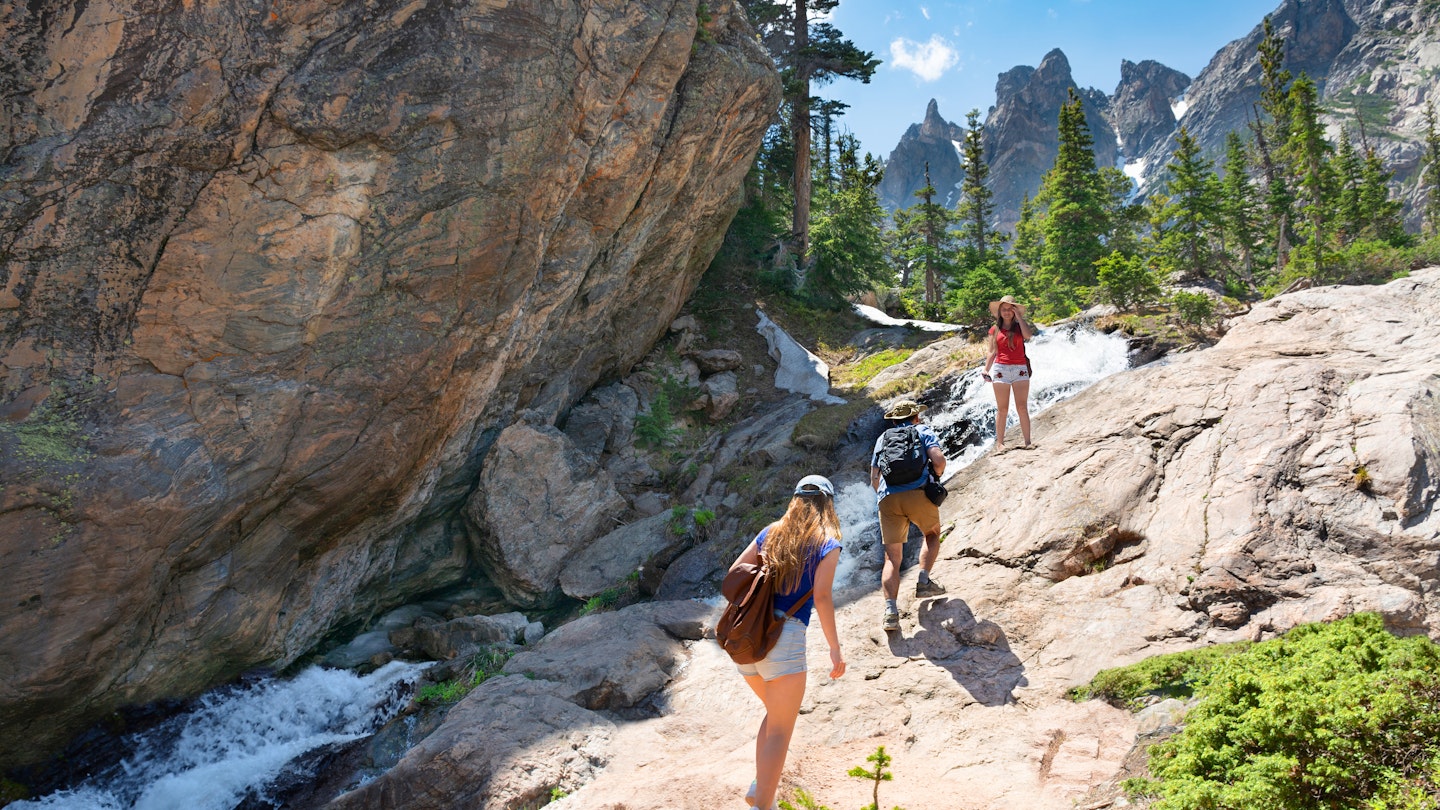Discover the Best Hiking Trails in Rocky Mountain National Park with iBestTravel
Lace up your hiking boots and get ready to hit the trails! The vast wilderness of Rocky Mountain National Park is a natural playground for fans of all things adventurous. With gentle loops to lakes suitable for families and challenging summit hikes for rugged explorers, there are plenty of mid-level waterfall walks in between for day-trippers.
The terrain in Rocky Mountain National Park is vital and elemental. Pine forests cloak the lower elevations, giving way to windswept tundra that provides a unique ecosystem for hundreds of species of wildflowers. Above, sculpted peaks silhouetted against the blue sky serve as a dramatic reminder of the last ice age.
Top Hikes in Rocky Mountain National Park
It’s a big place, so to help you find your way, here are some of the best hikes in Rocky Mountain National Park.
Note: During COVID-19, there may be additional travel restrictions. Ensure to check the latest guidance in Rocky Mountain National Park before planning a trip, and always follow local government health advice.
Bear Lake Loop
Best easy hike
0.5 miles round trip, 20 minutes, easy
Bear Lake is one of the park’s most popular destinations for first-time visitors, with good reason. On this trail, you’ll have front-row seats to dramatic glacial valleys and hulking granite summits that create a singular landscape. The Bear Lake Loop is a short and easy hike that’s perfect for families or those with limited mobility. There are 30 waymarkers along the route—hike counterclockwise to follow the curated path. With 10 lakes in the area and superb vistas, expect larger crowds during peak season.
Several longer and more strenuous paths set off from the Bear Lake trailhead or nearby Glacier Gorge trailhead, including hikes to Alberta Falls (1.8 miles round trip), Mills Lake (5.6 miles), and the Loch (6.2 miles), which can be extended to the exquisite Lake of Glass and Sky Pond (9.8 miles). While Flattop Mountain (12,324ft, 8.8 miles) may not be the park’s best summit, its magnetic pull from below is undeniable. Use the park shuttles to access the trailhead.
Bear Lake to Fern Lake via Lake Helene
Best hike for lake views
9.2 miles, 5 hours, moderate
This day hike is a park favorite known for its diverse scenery. You’ll climb to the treeline and an alpine lake before descending through fields of scree into a forested valley. Pass by more lakes, waterfalls, aspen groves, and elk-inhabited meadows. Lake Helene sits serenely beneath the imposing cliffs of Notchtop and Flattop mountains. Thanks to the park shuttle system, this is a one-way trip that requires no backtracking, and it’s mostly downhill! To do this hike, park at Fern Lake Trailhead (the endpoint) and take the shuttle to Bear Lake Trailhead.
Longs Peak and Chasm Lake
Best hike for tackling a Colorado 14er
15 miles round trip, 10 to 15 hours, very strenuous
Iconic in every way, Longs Peak is the pinnacle of Rocky Mountain National Park and one of Colorado’s classic climbs. The tallest peak in the park (14,259ft), Longs Peak can be summited via the exhilarating and exhausting Keyhole Route, which features on many visitors’ to-do lists. The crux of this route involves narrow traverses, vertiginous cliff faces, and a challenging climb up polished slabs of rock. Most climbers start the ascent by 3 am to reach the summit before noon.
The good news is that you don’t have to reach the summit to enjoy breathtaking views. Chasm Lake, located at the foot of the Diamond—Longs Peak’s legendary east face—is often rated as one of the park’s best hikes. Chasm Lake offers spectacular scenery without the risk of a technical climb. However, it’s still an 8.4-mile round trip, so being in good shape is necessary.
Gem Lake
Best hike for active families
3.6 miles round trip, 2 hours, moderate
At the northeastern end of Rocky Mountain National Park lies Lumpy Ridge, composed of 1.8 billion-year-old granite formations sculpted by the elements rather than glaciers. This distinct erosion style has created whimsical boulders, balancing rocks, and colossal domes. The trail to Gem Lake is a fantastic way to explore the area, featuring superb vistas back to the Continental Divide along the way to the jewel-like lake. Kids love the scrambling opportunities here, making it a good choice for family hikes. While the hike is relatively short, the elevation gain will keep you on your toes.
Mount Ida
Best hike for sweeping views and challenging ascents
10 miles round trip, 6 hours, strenuous
Mount Ida (12,880ft) is one of the easier peaks to access along the Continental Divide, and it’s an excellent spot for enjoying sweeping views. Due to its location on the western side of the park, Mount Ida is relatively unknown and an excellent place to escape crowds. The trail follows the Continental Divide past miniature alpine wildflowers all the way to the summit. The final stretch requires climbing through boulder fields, but the reward includes a sheer drop-off with stunning views of icy-blue alpine lakes.
Tips for Hiking in Rocky Mountain National Park
-
Hiking is best from mid-June to mid-October. Be prepared for snow and ice in other seasons.
-
Get an early start—dawn, if possible—to improve your chances of spotting wildlife and securing a parking spot before noon when storms often roll in.
-
Don’t underestimate the altitude. Allow time to acclimatize and pack sunscreen, sunglasses, a hat, ibuprofen, a windbreaker, and fleece. Staying hydrated is essential.
-
The park has six developed campsites; however, the best camping options are in the backcountry, offering more than 200 secluded sites. Hiking from Wild Basin Trailhead to Ouzel Falls and onto Bluebird or Thunder Lake makes for an unforgettable experience.
This article was originally written in 2019 and updated in 2021.




